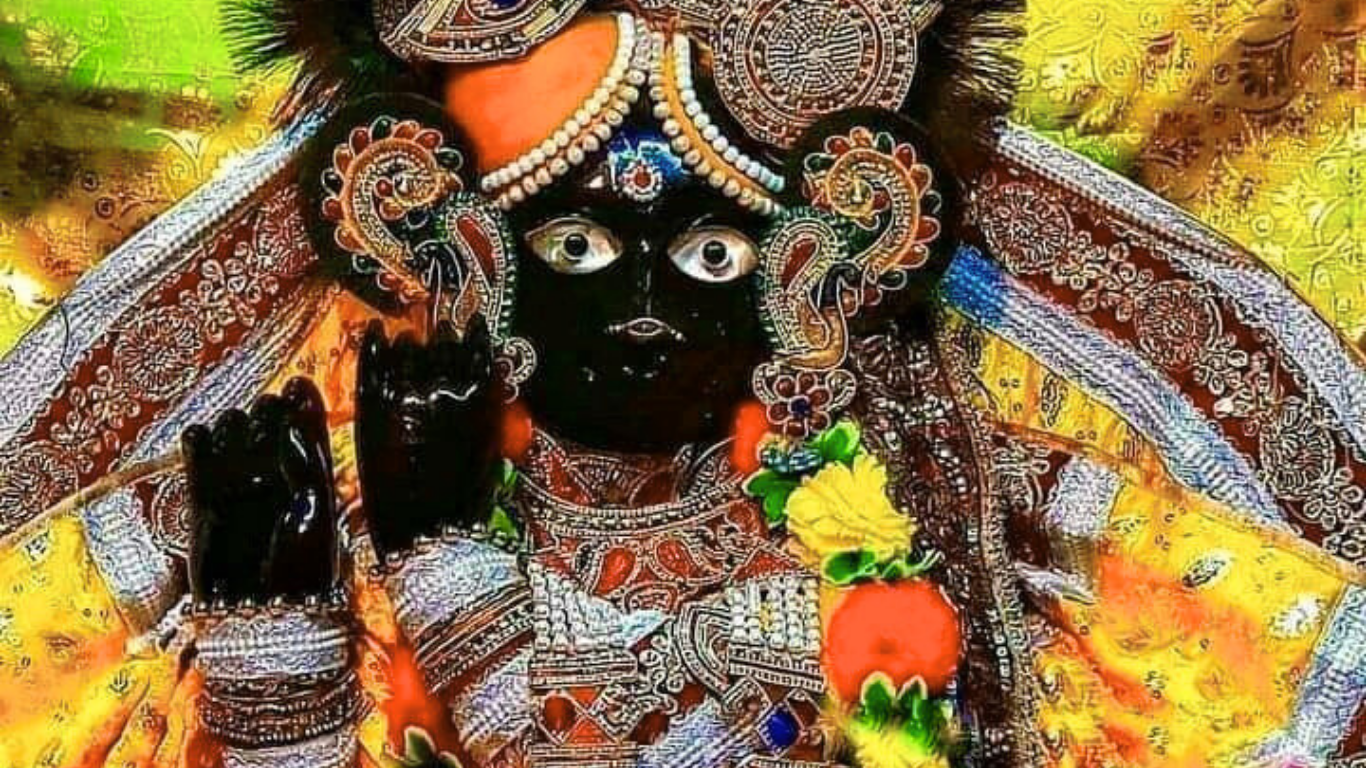
Nestled in the sacred town of Vrindavan, Uttar Pradesh, the Banke Bihari Temple at Goda Vihar is a spiritual gem dedicated to Lord Krishna. This iconic temple draws thousands of devotees daily, seeking the divine blessings of Krishna in his charming Banke Bihari form. The temple’s serene atmosphere and rich history make it a must-visit for those exploring Vrindavan’s spiritual landscape. Built in 1864, it reflects the deep devotion of Swami Haridas, who brought the deity to life through his love for Radha-Krishna. Located on Madan Mohan Bankey Bihari Road, the temple is a symbol of Braj Bhoomi’s cultural heritage. This article explores the temple’s history, significance, rituals, and visitor tips to help you plan a meaningful visit to this sacred site.
History of Banke Bihari Temple
The Banke Bihari Temple was established in 1864, rooted in the devotion of Swami Haridas, a revered poet and musician. Legend says Haridas’s intense devotion at Nidhivan led to a divine vision of Radha and Krishna, who merged into the single black idol of Banke Bihari at his request. Originally worshipped at Nidhivan as Kunj-Bihari, the deity was moved to the current temple. “Banke” means bent at three angles, referring to Krishna’s tribhanga posture, and “Bihari” means supreme enjoyer. The temple, built in Rajasthani style, was entrusted to Goswami Jagannath’s descendants, who continue its seva. This sacred site embodies Vrindavan’s spiritual legacy, attracting devotees with its mystical history.
|
Key Points |
Details |
|---|---|
|
Founded |
1864 by Swami Haridas, inspired by Radha-Krishna vision. |
|
Original Site |
Nidhivan, deity called Kunj-Bihari before Banke Bihari. |
|
Name Meaning |
“Banke” (bent at three angles), “Bihari” (supreme enjoyer). |
|
Legacy |
Seva by Goswami Jagannath’s descendants, Rajasthani architecture. |
Spiritual Significance of the Temple
Banke Bihari Temple is a cornerstone of Vrindavan’s spiritual heritage, embodying the love between Radha and Krishna. The deity, worshipped as a child, is believed to be so divine that curtains are drawn every few minutes during darshan to prevent devotees from being overwhelmed by his charm. The temple’s unique practices, like avoiding early morning aarti (except on Janmashtami), reflect this tender approach. Devotees feel a deep connection, often describing the idol’s tribhanga pose as radiant and mesmerizing. The temple’s role in Braj Bhoomi’s culture makes it a focal point for Krishna devotees, offering peace and spiritual fulfillment.
|
Key Points |
Details |
|---|---|
|
Deity |
Banke Bihari, a merged form of Radha-Krishna, in tribhanga pose. |
|
Practice |
Curtains drawn during darshan, no early aarti except Janmashtami. |
|
Significance |
Symbolizes Radha-Krishna’s love, central to Vrindavan’s spirituality. |
|
Experience |
Offers peace, devotion, and a divine connection for visitors. |
Rituals and Festivals
The temple’s rituals are unique, treating Banke Bihari like a child. No bells are used, and Mangala Aarti is performed only on Janmashtami, when darshan begins at 2 a.m. During Hariyali Teej (Jhulan Yatra), the deity is placed on silver and golden swings. On Sharad Purnima, Banke Bihari holds a flute, and on Akshay Tritiya, his feet are visible. Festivals like Holi and Janmashtami see grand celebrations with bhajans, kirtans, and vibrant decorations. Devotees offer services like Phool Bangla Seva and Chapan Bhog Seva, enhancing the spiritual experience. These rituals create a lively, devotional atmosphere year-round.
|
Key Points |
Details |
|---|---|
|
Rituals |
No bells, Mangala Aarti only on Janmashtami, curtains during darshan. |
|
Festivals |
Janmashtami, Holi, Hariyali Teej, Sharad Purnima, Akshay Tritiya. |
|
Seva |
Phool Bangla, Chapan Bhog, and other devotional offerings. |
|
Atmosphere |
Vibrant with bhajans, kirtans, and colorful decorations. |
Architecture and Features
The Banke Bihari Temple showcases classic Rajasthani architecture with intricate arches, pillars, and red sandstone. The idol of Krishna in the tribhanga posture, adorned with flowers and jewels, stands in the sanctum, with a crown symbolizing Radha’s presence. The temple’s design reflects Vrindavan’s cultural richness, with floral decorations adding to its charm. Narrow lanes lead to the temple, creating an intimate setting. The absence of bells and the periodic closing of curtains enhance the unique ambiance. This architectural beauty, combined with spiritual vibrancy, makes the temple a visual and emotional delight for visitors.
|
Key Points |
Details |
|---|---|
|
Architecture |
Rajasthani style with red sandstone, arches, and pillars. |
|
Idol |
Krishna in tribhanga pose, crown for Radha, floral decor. |
|
Features |
No bells, curtains for darshan, narrow lanes to temple. |
|
Ambiance |
Spiritual and visually appealing with cultural richness. |
Visitor Tips and How to Reach
The temple is at Goda Vihar, Vrindavan, 12 km from Mathura Junction (accessible by train) and 161 km from Delhi’s Indira Gandhi International Airport. Auto-rickshaws or e-rickshaws are ideal for reaching the temple due to narrow lanes; cars can park at VIP Road. Visit between October and April for pleasant weather. Expect crowds, especially during festivals, with 1-2 hour queues (3-4 hours during Janmashtami). Early morning (7 a.m.) or Sandhya Aarti is less crowded. Dress modestly, remove shoes (use free storage), and avoid intoxicants. For VIP darshan, contact Vrindavan Mathura Tourism at 7078723132.
|
Key Points |
Details |
|---|---|
|
Location |
Goda Vihar, 12 km from Mathura, 161 km from Delhi airport. |
|
Transport |
Auto/e-rickshaws, parking at VIP Road, Mathura Junction nearby. |
|
Best Time |
October-April, early morning or Sandhya Aarti for fewer crowds. |
|
Tips |
Modest dress, no shoes/intoxicants, book VIP darshan. |



